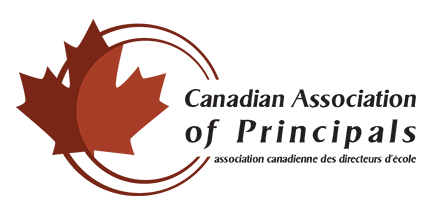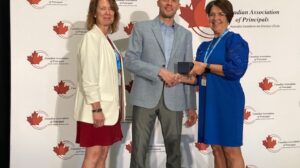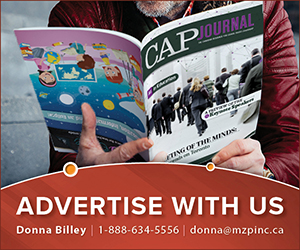CAP 2024 KEYNOTE SPEAKERS: Dr. Jenni Donohoo
Collective efficacy is not a program or an initiative. It does not come pre-packaged in a box or a kit. It exists in our minds. It’s the shared belief that educators can positively impact student achievement despite other influences in students’ lives that might pose challenges to their success. Collective efficacy is a mindset that influences how educators (a) think about their role in nurturing student growth, (b) behave when faced with difficult circumstances, (c) feel about their responsibilities, and (d) motivate themselves to meet challenging goals and realize greater impact. Table 1 helps to illustrate the differences in schools where collective efficacy is firmly established as opposed to in schools where efficacy is weak.
| A Strong Sense of Collective Efficacy | A Weakened Sense of Collective Efficacy |
| Perseverance | Procrastination |
| Persistence | Reluctance |
| Effortful | Give Up More Easily |
| Commitment | Apathy |
| Optimistic | Pessimistic |
| Set Challenging Goals | Set Less Challenging Goals |
| Professional Satisfaction and Well-Being | Greater Stress and Anxiety |
| Growth Mindset | Fixed Mindset |
| Open to Learning Stance | Knowing Stance |
| Mastery Goal Orientation | Performance Goal Orientation |
| Higher Academic Achievement | Lower Academic Achievement |
According to John Hattie’s Visible Learning Synthesis (2023), collective teacher efficacy is the number one factor that matters most in raising student achievement. This is not a new concept and even though the research dates back many decades, there are still many educators who are unfamiliar with it and/or unaware of the strength of the evidence that supports its impact.
School leaders can foster a greater sense of collective teacher efficacy in the following ways…
Start by building awareness that it exists, and the positive consequences associated with it. Share various definitions of collective efficacy with your staff (see the end of the article for a few) and ask teachers to underline words or phrases that resonate with them. Have teachers create a definition using their own words and ask them to articulate what is looks like and feels like in a school.
A second way school leaders can foster collective teacher efficacy is by practicing instructional leadership. By facilitating opportunities for the staff to learn from one another and leading discussions about the results specific teaching strategies have on student learning– making cause and effect relationships explicit, school leaders can help teams of teachers see the impact of their joint efforts. Goddard (2015) and his colleagues were interested in the relationship between instructional leadership, teacher collaboration, and collective efficacy and how this relationship impacted student learning. They noted that strong instructional leadership “can serve to influence collective efficacy indirectly by setting normative expectations for formal, frequent, and productive teacher collaboration around instructional improvement” (p. 504). By promoting a culture of collaboration focused on instructional improvement, principals have the potential to support school improvement in ways that positively influence teachers’ collective efficacy beliefs and thus promote student achievement.
A third strategy for fostering collective efficacy is by engaging teams in setting interdependent goals. Several research studies demonstrate a correlation between consensus on goals and collective teacher efficacy (Leithwood & Sun, 2012; Kruz & Knight, 2003; Ross, Hogaboam-Gray, & Gray, 2004). Interdependent goal setting is a process of deciding and setting goals together through observing, listening, and prioritizing student learning needs. Principals can support teams in setting interdependent goals by establishing a sense of purpose for the work, engaging teams in analyzing evidence on the learning progress of all students, and encouraging teams to reflect on what they are trying to achieve with students and how they are working toward their goals.
A group of grade 2 teachers that I worked with recently were concerned about students’ ability to recognize patterns in math, so they set the following interdependent goal: “All 2nd grade students will be able to identify, extend, and create repeating, growing, and shrinking patterns by the end of the first quarter.” Interdependent goals imply collective action and shared responsibility. Everyone’s contributions and efforts are needed to achieve interdependent goals, and, in that sense, collaboration is strengthened. Furthermore, a meta-analysis demonstrated that the relationship between efficacy and performance is maximized when there is positive interdependence amongst the team members. (Gully, Incalcaterra, Joshi, & Beaubien, 2002). Interdependent goals are one way school leaders can increase teachers’ interdependencies and reduce isolation.
By putting some of these leadership strategies in place, principals can influence more efficacious mindsets and thus help teachers and students reach their full potential.
Definitions of Collective Teacher Efficacy
Collective teacher efficacy is the belief that teachers in a given school make an educational difference to their students over and above the educational impact of their homes and communities. (Tschannen-Moran, M., & Barr, M., 2004)
Collective teacher efficacy refers to the beliefs of teachers in a school that they can organize and execute the course of action required to have a positive effect on students. (Goddard, R., Hoy, W., & Woolfolk Hoy, A., 2004)
Collective efficacy perceptions are future-oriented beliefs about the functioning of a collective in a specific situation or context. (Moolenaar, A., Sleegers, P., & Daly, A., 2012)
Collective efficacy is the shared conviction that educators make a significant contribution in raising student achievement. (Hattie, J., Donohoo, J., & DeWitt, P., 2020)
References:
Goddard, R., Goddard, Y., Kim, E., & Miller, R. (2015). A theoretical and empirical analysis of the roles of instructional leadership, teacher collaboration, and collective beliefs in support of student learning. American Journal of Education, 121, 501-530.
Goddard, R., Hoy, W., & Woolfolk Hoy, A. (2004). Collective efficacy beliefs: Theoretical developments, empirical evidence, and future directions. American Educational Research Association, 33(3), 3-13.
Gully, S., Incalcaterra, K., Joshi, A., & Beaubien, J. (2002). A meta-analysis of team-efficacy, potency, and performance: Interdependence and level of analysis as moderators of observed relationships. Journal of Applied Psychology, 87(5), 819-832.
Hattie, J. (2023). Visible Learning: The Sequel. Routledge, New York, NY.
Hattie, J., Donohoo, J., & DeWitt, P. (2020). Understanding Impact to Foster Collective Efficacy. Principals’ Connections- The magazine of Catholic Principals’ Council in Ontario, 24(2), 15-17.
Kurz, T. B., & Knight, S. (2003). An exploration of the relationship among teacher efficacy, collective teacher efficacy, and goal consensus. Learning Environments Research, 7(2), 111–128.
Leithwood, K., & Sun, J. (2012). Meta-analytic review of unpublished research: The nature and effects of transformational school leadership. Educational Administration Quarterly, 48(3), 387-423.
Moolenaar, A., Sleegers, P., & Daly, A. (2012). Teaming up: Linking collaboration networks, collective efficacy, and student achievement. Teaching and Teacher Education 28, p. 251-262.
Ross, J., Hogaboam-Gray, A., & Gray, P. (2004). Prior student achievement, collaborative school processes, and collective teacher efficacy. Leadership and Policy in Schools, 3(3), 163–188.
Tschannen-Moran, M., & Barr, M. (2004). Fostering student learning: The relationship of collective teacher efficacy and student achievement. Leadership and Policy in Schools, 3(3), 189-209.
AUTHOR: Dr. Jenni Donohoo











